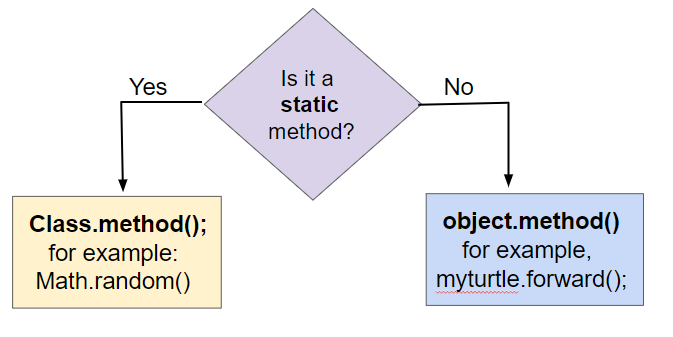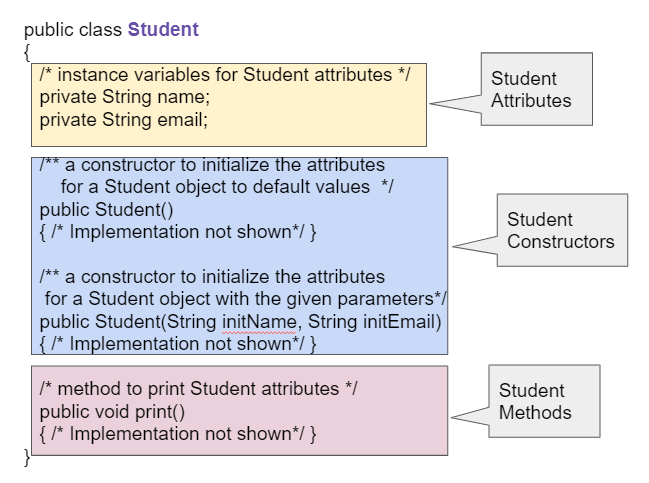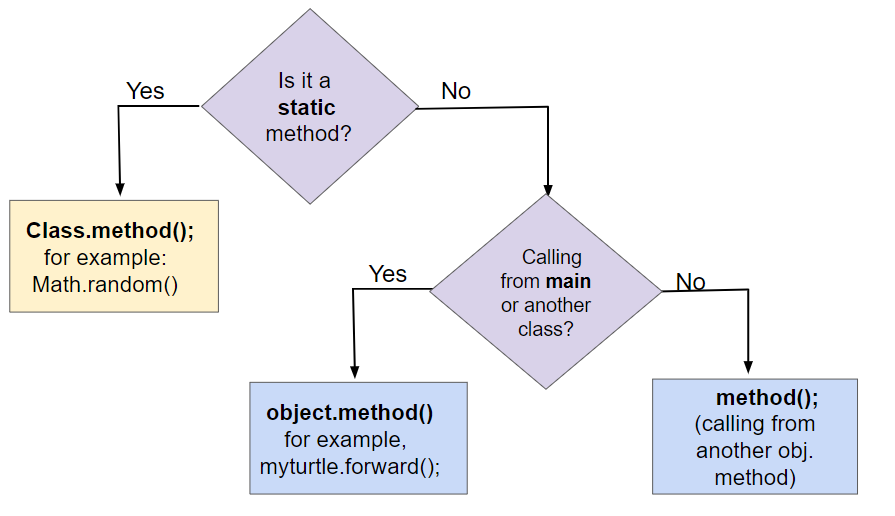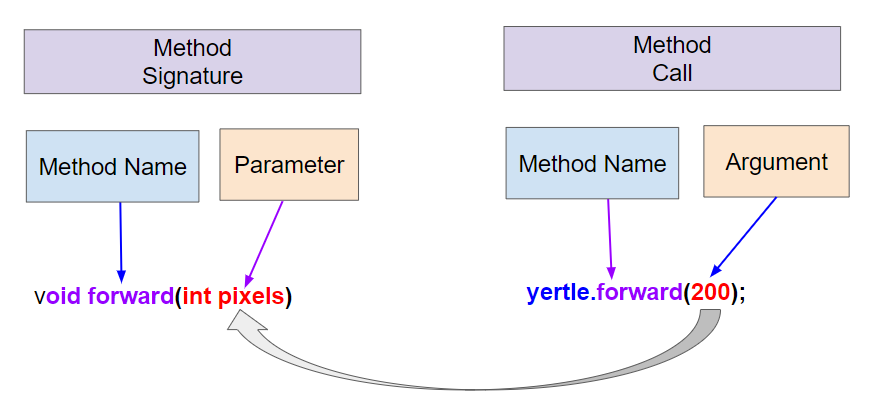📓1.14: Instance Methods
Table of Contents
📖 This page is a condensed version of CSAwesome Topic 1.14
Calling Instance (Object) Methods
In object-oriented programming, methods define the behavior and actions that an object can perform.
🐢 Turtle objects can go forward or turn left using method calls like yertle.forward() and yertle.turnRight() to change its position. These methods are sometimes called instance methods or object methods because they are called using an instance or object of the class — in this case a specific Turtle object like yertle.
Class Methods vs. Instance Methods
In earlier lessons, we learned how to call static methods (also called class methods). Class methods use the keyword static in their method signature and do not access or change the attributes of an object.
📣 Class methods are called using the class name followed by the dot (.) operator and the method name.
For example:
Math.sqrt(25);runs thesqrtmethod defined in theMathclass to find the square root of 25.
In this lesson, we will learn more about instance methods, which are always called using a specific object of the class. They are not static methods. They access and change the attributes of the object they are called on. For example:
For example:
yertle.forward();changes theTurtle-type objectyertle’s position.

Traditionally, Class names are capitalized, and object variables are lowercase.
Method Signatures
The method signature defines the method’s name and the number and types of parameters it takes. In a class definition or in documentation of a library, instance methods are usually defined after the instance variables (attributes) and constructors in a class.
More on this in Unit 3 when we write our own full classes!
For example, see the Student class below. Notice that the methods do not use the keyword static.

Method Calls
To use an object’s method, you must use the object name and the dot (.) operator followed by the method name.
For example:
yertle.forward();callsyertle’sforwardmethod to move a turtle object forward 100 pixels.
Object/Instance Methods often work with the attributes of the object, such as the direction the turtle is heading or its current position.
Methods inside the same class can call each other using just methodName(). But to call instance methods in another class or from a main() method, you must first construct an object of that class and then call its methods like so:
ClassName object = new ClassName();
object.methodName();
The following flowchart shows the difference between calling static (class) methods and instance (object) methods:

Note:
method();is used to call a method within the same class, butobject.method();is necessary if you are calling the method from a different class.
Method Calls with Arguments
Methods like forward() and turnRight() always do the same thing unless you give them arguments. Arguments allow you to specify details like how far to move or how much to turn.
Example:
forward(200); // move 200 pixels
turn(30); // turn 30 degrees
When you define your own method, the variables in its definition are called parameters. When you call the method, the values you pass in are arguments.

Methods that Return Values
So far, our Turtle methods have been void methods — they do something but don’t return a value.
Non-void methods return a value that can be stored or used. Methods that return information about an object are called getters. For example:
int width = yertle.getWidth();
System.out.println(yertle.getXPos());
Note: Remember to always do something with the value a getter returns — store it in a variable, use it in a calculation, or print it.
CSAwesome Activities: Turtle Class
🐢 To explore the concepts from this lesson in code, we’ll play around with the Turtle class on the CSAwesome website instead of taking notes.
👉 GO TO: , SIGN IN to your account, and complete all the turtle-related coding activities/challenges with a partner.
Summary
-
Instance methods define the behavior and actions that an object can perform.
-
(AP 1.14.A.1) Instance methods are called on objects of the class.
-
(AP 1.14.A.1) The dot operator is used along with the object name to call instance methods, for example object.method();
-
(AP 1.14.A.2) A method call on a
nullreference will result in aNullPointerException. -
Some methods take arguments that are placed inside the parentheses object.method(arguments).
-
A method signature is the method name followed by the parameter list which gives the type and name for each parameter. Note that methods do not have to take any parameters, but you still need the parentheses after the method name.
-
The method call arguments must match the method signature in number, order, and type.
-
A method call interrupts the sequential execution of statements, causing the program to first execute the statements in the method or constructor before continuing. Once the last statement in the method or constructor has executed or a
returnstatement is executed, the flow of control is returned to the point immediately following the method or constructor call. -
Non-void methods are methods that return values. You should do something with the return value, such as assigning it to a variable, using it in an expression, or printing it.
Acknowledgement
Content on this page is adapted from Runestone Academy - Barb Ericson, Beryl Hoffman, Peter Seibel.